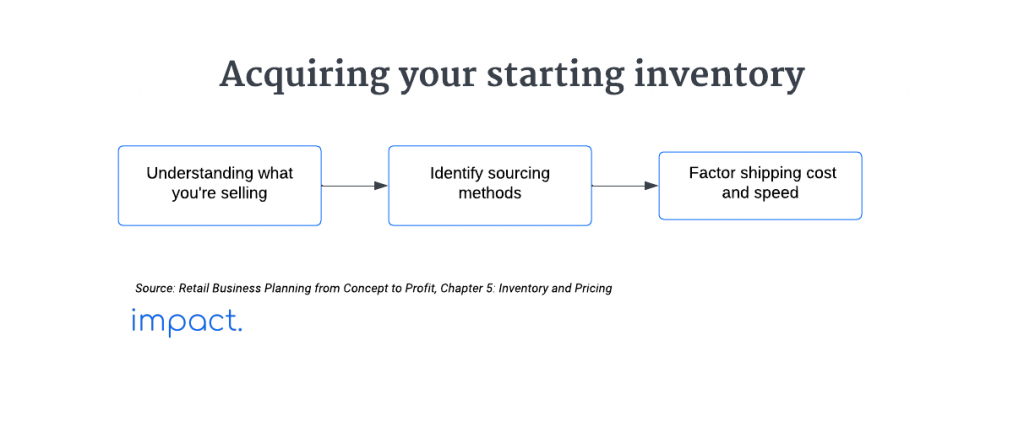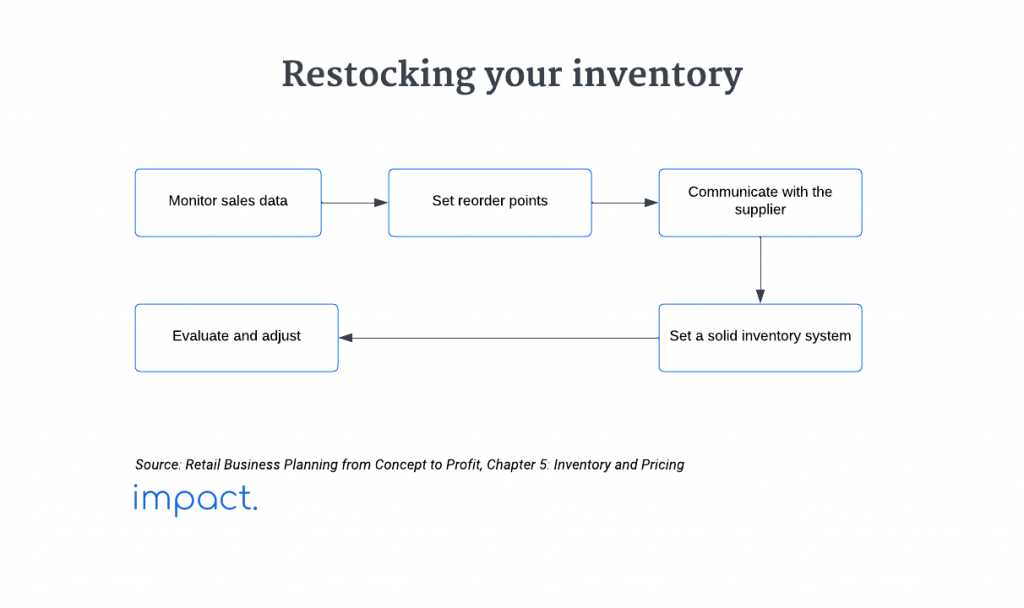Kanban: Definition, 6 Rules, and its Benefits
Kanban is a crucial part of the Just in Time (JIT) system, which we discussed…
Sean Thobias
May 17, 2025As your retail business evolves with a chosen location and a well-designed interior, the next crucial move is picking your first set of products. This initial retail inventory is vital when launching a retail business, as it involves deciding on and obtaining the first batch of items your business will sell or use.
Furthermore, products will be selling fast when you open. Therefore, you should also start planning how to restock the inventory you sell right now.
Some new stores face challenges right from the start. They get caught up in setting up the store but forget to stock it with their products. On the other hand, some stores rush to buy wholesale stock, only to realize it doesn’t quite fit the store they designed.
Leverage your business plan to clarify your niche and guide your stock procurement strategy for a successful store launch. Direct your plan towards acquiring the necessary inventory to kickstart your business.

Before investing heavily in inventory, ensure a solid grasp of customer preferences gleaned from thorough market research.
Analyze the findings to align your inventory precisely with what your target audience desires, maximizing the potential success of your investment and minimizing unnecessary expenses.
If you plan to start a small or niche business focusing on personalized or handmade products, think about making the products yourself.
Pros:
Cons:
Buy products in bulk from wholesalers for cost-effective solutions and a diverse product range without the complexities of dealing directly with manufacturers. This method is ideal for retail business owners seeking efficiency and variety in their inventory.
Pros:
Cons:
Consider teaming up with manufacturers for custom products tailored to your vision, perfect for those with unique ideas or specific quality requirements in their product offerings.
Pros:
Cons:
Consider distributors as middlemen between manufacturers and retailers, simplifying the supply chain. This method works well for businesses aiming for an uncomplicated way to get products.
Pros:
Cons:
Consider dropshipping if you’re starting and don’t have much money to invest. With this model, you sell products but don’t need to keep them in stock – they’re sent directly from the supplier to the customer.
Pros:
Cons:
Explore trade shows to meet manufacturers, wholesalers, and distributors face-to-face. It’s great for businesses wanting personal connections and finding new products firsthand.
Pros:
Cons:
When picking suppliers, consider how much it costs to deliver and how fast you’ll get your stuff. Shipping can eat up to 5%-10% of your product’s cost, so be smart about smaller shipping for small orders and freight for bigger ones to keep your profits in check.
Meanwhile, slow wholesale orders and sluggish shipping mean getting your products could take weeks or months. If you have a specific opening date, choose suppliers who can deliver your inventory quickly to avoid delays.
In the current retail landscape, pricing is intricate, and competition limits the flexibility to set prices arbitrarily based on market demand.
When determining a retail price, consider these methods:
The break even point is the level of sales at which total revenue equals total costs, resulting in neither profit nor loss. Determining the break-even point is crucial for setting a baseline sales target that covers all costs.

Calculate fixed costs (e.g., rent, utilities), variable costs (e.g., cost of goods sold), and selling price. Reaching the break even point occurs when selling a certain quantity generates total revenue covering fixed and variable costs.
Cost-plus pricing involves calculating the total cost of producing or purchasing a product and then adding a markup percentage to determine the selling price. This pricing method ensures that each unit sold covers variable and fixed costs and generates a profit.

Determine the cost of producing or purchasing each unit, and then add a percentage markup to cover both costs and generate profit. The challenge is accurately assessing costs and choosing an appropriate markup percentage based on industry standards and competitive pricing.
Rate-of-return pricing, or target-return pricing, involves setting prices to achieve a target rate of return on investment. This method focuses more on profitability and aims to generate a specified percentage return on the capital invested in the business.

Determine the desired rate of return on the investment in the business. Calculate the cost per unit and add a portion of the rate of return to the selling price. This method requires a clear understanding of the desired return and the total investment made in the business.
Demand pricing involves setting the price based on the product’s perceived value in the market. Prices are determined by what customers are willing to pay, considering factors like brand image, exclusivity, and market demand.
This method relies on understanding customer behavior and market dynamics to set a price that maximizes revenue by balancing the product’s perceived value with consumer willingness to pay.
Plan to restock your inventory to avoid empty shelves and customer dissatisfaction.
To do this, keep track of your retail sales and prioritize restocking the best-selling and most profitable items. Utilize an efficient inventory management system to gain the necessary insights for effective restocking.

Regularly check your sales data to identify trends in customer purchases and timing. Use historical sales information to determine seasonal popularity and evolving customer preferences.
By checking your retail sales data, you’ll understand what your customers want and when they want it. It helps you stock up on the right products at the correct times so you’re ready to meet demand and keep customers happy.
Determine optimal product reorder points by analyzing sales history and delivery times. Include extra stock to handle unexpected demand or delays, ensuring you maintain a reliable and responsive inventory.
Setting the right reorder points means always having products available when customers want them. It helps you avoid running out of stock or having too much inventory, keeping your business running smoothly.
Maintain regular communication with suppliers from the sourcing of your initial inventory. Keep them informed about your retail sales and stock needs to facilitate efficient production planning.
Good communication with your suppliers ensures you know if there are any issues with getting the needed products. By keeping them in the loop about your sales, they can better plan their production schedules to meet your demands.
Automate your restocking process by leveraging technology to track retail sales and automatically reorder items when running low. It saves time and minimizes the risk of errors in the restocking procedure.
Automation makes your life easier, it helps you stay on top of your inventory without manually tracking every sale. This way, you can focus on growing your business instead of worrying about running out of stock.
Regularly review your restocking strategy and make changes based on market shifts, customer behavior, or any factors affecting your business for sustained effectiveness.
By reviewing and adjusting your strategy, you make sure your restocking process stays effective. It keeps your inventory management sharp and your business competitive.
For small retail businesses, keeping track of inventory can be straightforward with essential lists, or you can take it further by connecting with your suppliers. While a manual system might work, consider investing in inventory management software — it’s a smart move for boosting efficiency and accuracy in your operations.
Setting the correct prices for your products is crucial for retail success. It’s more than doubling the wholesale cost; you must explore various strategies to maximize your profits. In the next section, we’ll delve into the essentials of hiring and training your team as you build your retail business.
Ramsey, D., & Ramsey, J. (2010). The Everything Guide to starting and running a retail store: All you need to get started and succeed in your own retail adventure. Adams Media.
Impact Insight Team
Impact Insights Team is a group of professionals comprising individuals with expertise and experience in various aspects of business. Together, we are committed to providing in-depth insights and valuable understanding on a variety of business-related topics & industry trends to help companies achieve their goals.
See how our ERP provides better value.
Speak with our consultant to explore how we can improve your accounting, processes, and people.
